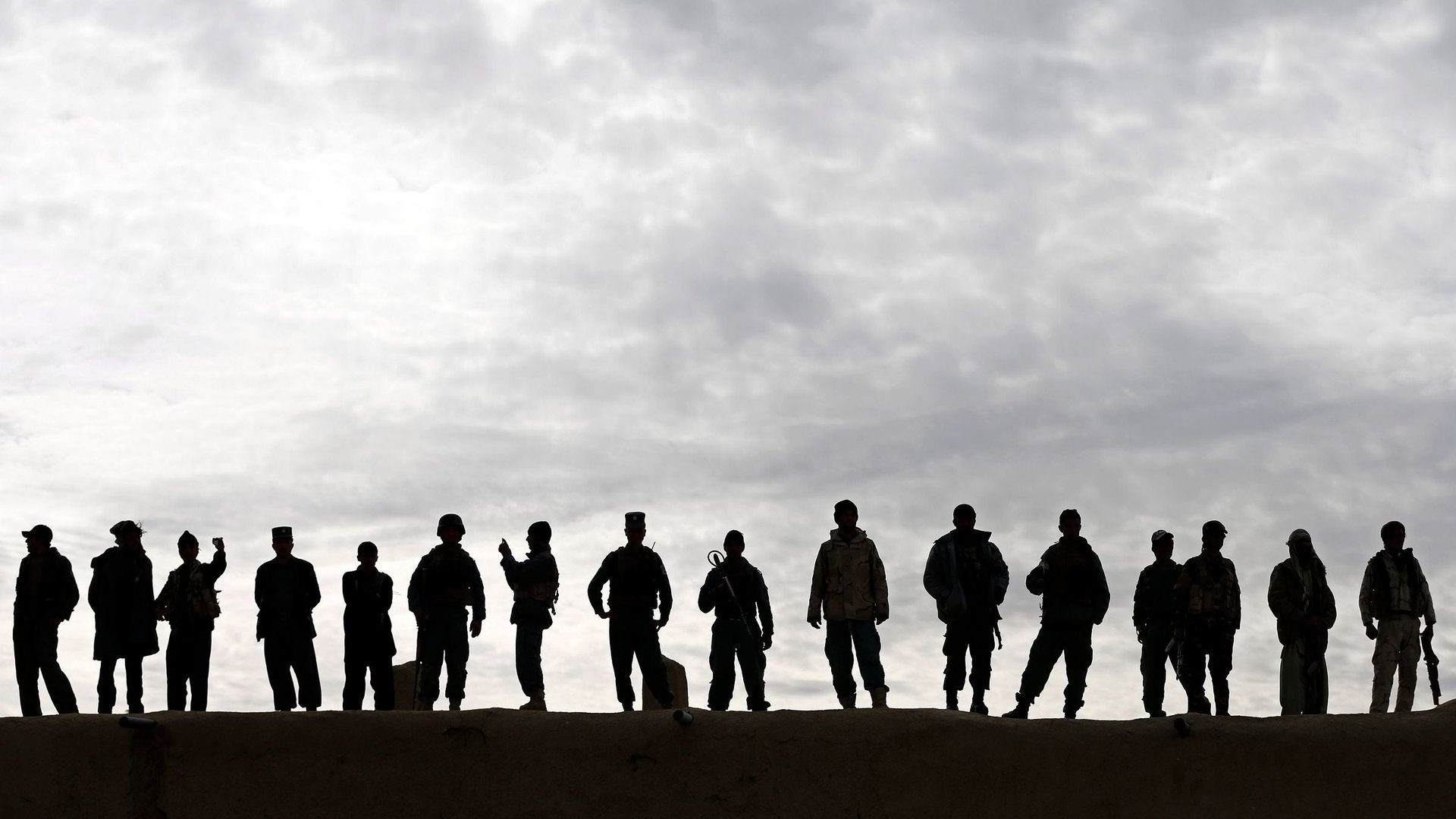The questions the US won’t answer about its billions in Afghanistan
With the official “end” of the international military occupation of Afghanistan last fall, things are changing. The US will only have 5,000 troops deployed in Afghanistan by the end of the year, down from a peak of 187,000 in 2008. But American taxpayers will still shoulder a hefty cash commitment: $16 billion in 2015, and similar levels through 2017. Most of that money will be added to the $65 billion the US has already spent training and supporting the Afghan national security forces.


With the official “end” of the international military occupation of Afghanistan last fall, things are changing. The US will only have 5,000 troops deployed in Afghanistan by the end of the year, down from a peak of 187,000 in 2008. But American taxpayers will still shoulder a hefty cash commitment: $16 billion in 2015, and similar levels through 2017. Most of that money will be added to the $65 billion the US has already spent training and supporting the Afghan national security forces.
But there’s one new difference: Now the public won’t know where that money is going, or if it is accomplishing anything, according to (pdf) the Special Inspector for Afghan Reconstruction, an independent auditor charged with oversight of US money in Afghanistan. In the past, it’s uncovered the loss of tens of thousands of AK-47s in Afghanistan, and recovered some $570 million in criminal forfeitures and other savings. But US officials have decided they will no longer publicly answer its questions about funding the Afghan army, instead keeping them classified.
Here’s some of what the public can no longer know:
How many people are in the Afghan army, and how much of their salaries the US is paying? Are these numbers sustainable without US funding?
How much money is being spent to train Afghan soldiers and police?
How many Afghan infrastructure projects are being funded by the Department of Defense?
How many weapons and what kind are being bought to arm the Afghan army?
How many military bases has the US turned over to the Afghans, and can they afford to sustain them?
Are the anti-corruption efforts by the Afghan government working?
Has any Afghan institution replaced the US anti-corruption and anti-crime task force?
In response to SIGAR’s request for that information, General John Campbell, who commands US forces in Afghanistan, wrote that
While I cannot comment upon the precise reason why certain information was considered unclassified in the past, I can advise that given the risks that continue to exist to our forces and those of Afghanistan, I have directed that sensitive operational information or related materials that could be used by those who threaten the force, or Afghan forces, be classified at an appropriate level. With lives literally on the line, I am sure that you can join me in recognizing that we must be careful to avoid providing sensitive information to those threaten our forces and Afghan forces.
But it’s hard to see this classification as anything other than an attempt to elide hard questions about whether the Afghan state can function without US support. And given the recent experience in Iraq, where the US-trained and equipped army dissolved in the face of advancing Islamic State militias, scrutiny of US clients should only be increasing.